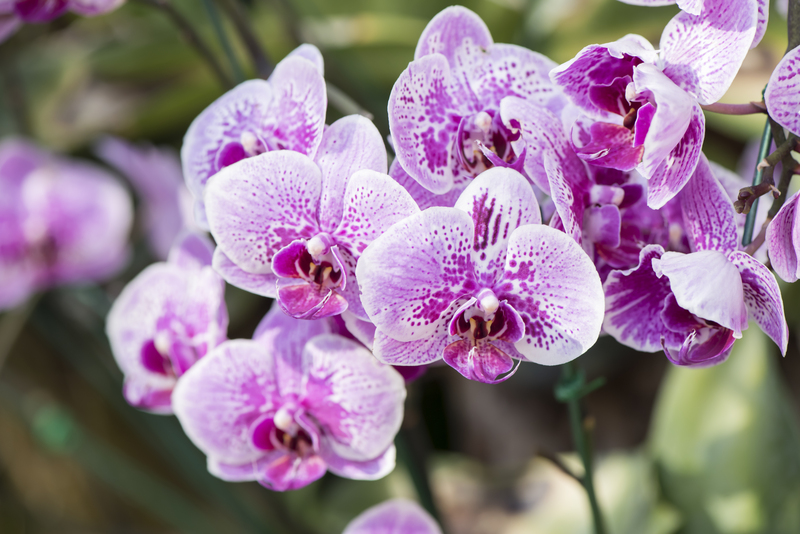Nature Nurtures: How Gardening Fosters Climate Change Solutions
Posted on 11/06/2025
Nature Nurtures: How Gardening Fosters Climate Change Solutions
As the world grapples with the escalating effects of climate change, individuals and communities search for practical, eco-friendly solutions. Among the most accessible and impactful actions is gardening. Gardening fosters climate change solutions by mitigating greenhouse gases, improving local biodiversity, and empowering people to engage directly with sustainability.
Understanding the Link Between Gardening and Climate Change
Climate change presents one of the greatest challenges of our era. It manifests through unpredictable weather, rising sea levels, biodiversity loss, and more. The need for solutions is urgent—and every effort counts. Gardening, often overlooked, is emerging as a transformative climate change solution accessible to people everywhere.
The Science: How Does Gardening Impact the Climate?
- Carbon Sequestration: Plants absorb carbon dioxide (CO2) during photosynthesis, reducing greenhouse gases in the atmosphere.
- Biodiversity Support: Gardens offer vital habitats for insects, birds, and other wildlife, supporting ecological resilience.
- Urban Cooling: Gardens reduce the urban heat island effect by providing shade and increasing moisture evaporation.
- Soil Improvement: Healthy soils store more carbon, filter water, and reduce erosion.

Gardening for Climate Action: Practical Solutions
Gardening for climate change solutions encompasses a variety of techniques and practices. Let's explore how nature nurturing through gardening can make homes and communities more resilient.
1. Carbon Capture and Storage in Gardens
Plants are natural allies in the fight against climate change. By absorbing CO2 from the atmosphere and storing it in their leaves, stems, roots, and surrounding soil, gardens actively capture carbon. Trees and perennials, in particular, play a crucial role as long-term carbon sinks.
- Planting Trees and Shrubs: Planting native trees in backyards or community spaces can sequester significant amounts of carbon.
- Native and Perennial Plants: These plants store more carbon below ground and require less maintenance.
- Cover Crops: In kitchen gardens or vegetable beds, planting cover crops like clover or beans during the offseason increases soil organic matter, improving carbon uptake.
2. Regenerative Gardening Practices
Conventional gardening often relies on synthetic fertilizers and pesticides, which can exacerbate carbon emissions and degrade soil health. In contrast, regenerative gardening enhances soil vitality and ecosystem function.
- No-Dig Methods: By avoiding tilling, gardeners maintain soil structure and prevent the release of stored carbon.
- Composting: Composting organic waste reduces methane emissions from landfills and enriches soil carbon stocks.
- Using Mulch: Mulching preserves soil moisture, prevents erosion, and naturally feeds the soil.
3. Water Conservation and Management
Climate change often brings prolonged droughts or unpredictable rainfall. Smart gardening can help conserve water:
- Rain Gardens: These are planted depressions that collect and filter runoff, reducing pollution and recharging groundwater.
- Drip Irrigation: Drip systems deliver water directly to plant roots, reducing waste and evaporation.
- Bioswales and Permeable Paving: These designs absorb rainwater and reduce erosion, important in climate-adaptive landscaping.
4. Supporting Pollinators and Enhancing Biodiversity
Gardens can act as climate refuges for pollinators and other wildlife. By prioritizing a diversity of native plants and avoiding chemical pesticides, gardeners foster rich, resilient ecosystems.
- Pollinator Gardens: Planting flowers that bloom throughout the growing season feeds bees, butterflies, and hummingbirds.
- Installing Insect Hotels: Creating homes for solitary bees and beneficial insects supports biodiversity.
- Wildlife Corridors: Growing hedgerows and preserving wild areas allows birds, mammals, and insects safe passage and resources in urban environments.
The Social Impact: Gardening Empowers Climate Awareness
Gardening is a catalyst for community climate action. It creates hands-on opportunities for education, collaboration, and collective stewardship. Community gardens especially inspire local engagement, climate literacy, and food security.
Gardening in Schools: Building Climate Leaders
School gardens teach children the science of sustainability, climate adaptation, and the value of ecosystem services. Activities like composting, seed starting, and caring for pollinator habitats foster lifelong environmental mindfulness.
Community Gardens: Fostering Connection and Resilience
Local gardens bridge social divides and help neighborhoods adapt to climate stresses by offering:
- Shared green spaces for recreation, learning, and events
- Fresh local produce that reduces food miles and packaging waste
- Collective composting and resource sharing
Gardening and Mental Well-being
Gardening does not merely offer environmental benefits; it also soothes the mind and body. Exposure to greenery reduces stress, encourages exercise, and nurtures a sense of hope—all indispensable in the climate era.
How to Start a Climate-Smart Garden
Anyone can contribute to climate change solutions through gardening, whether you have a sprawling yard, a balcony, or a windowsill. Here is a step-by-step guide to kickstart your sustainable gardening journey:
Step 1: Assess Your Space and Climate Zone
- Determine your USDA plant hardiness zone (or local equivalent)
- Measure available sunlight and shade areas
- Test your soil for texture and fertility
Step 2: Choose Climate-Appropriate Plants
- Select native species for resilience to local pests, drought, and climate shifts
- Mix trees, shrubs, perennials, and annuals to maximize carbon storage and biodiversity
- Include pollinator favorites and species with long blooming times
Step 3: Enrich and Protect the Soil
- Add organic compost to boost soil carbon and nutrients
- Mulch to regulate temperature, moisture, and soil health
- Use gentle, no-dig methods to avoid disrupting soil microbes
Step 4: Use Water Wisely
- Install rain barrels or greywater systems to irrigate plants
- Water early in the morning to reduce evaporation
- Experiment with drought-tolerant species and xeriscaping
Step 5: Create Habitat and Encourage Diversity
- Install birdbaths, bee hotels, and log piles
- Leave some areas wild for foraging and nesting
- Avoid pesticides that threaten beneficial insects
Gardening and the Broader Climate Change Movement
While individual gardens alone won't solve the climate crisis, their collective impact is significant. When multiplied across cities and countries, these spaces create vast networks of carbon sinks, climate refuges, and empowered citizens.
Case Studies: Gardens Making a Difference Globally
- Urban Agriculture in Detroit, USA: Community gardens transformed abandoned lots into productive spaces, capturing carbon, creating jobs, and improving food access.
- Forest Gardens in Sub-Saharan Africa: Agroforestry combines trees with crops, increasing carbon storage and climate resilience for millions of farmers.
- Pollinator Gardens in the UK: Nationwide programs have revived populations of bees and butterflies, vital for food security amid changing climates.

Frequently Asked Questions About Gardening for Climate Solutions
How much carbon can a home garden sequester?
Estimates vary, but even small gardens can make a noticeable difference. Mature trees can capture up to 22 kg of CO2 annually, while healthy, organic-rich soils can store even more per square meter. The more diverse and densely planted your garden, the greater its carbon sequestration.
Can urban gardens really impact the global climate?
Yes, when widely adopted. Urban gardens cool cities, reduce energy demand, absorb air pollution, and provide green corridors for wildlife. They also play a crucial role in community education and resilience.
What are the best plants for a climate-friendly garden?
Focus on native species suited to your local climate; they require fewer resources and provide vital habitat. Trees like oaks, maples, or fruit trees, mixed with perennial shrubs and wildflowers, offer layered carbon and biodiversity benefits.
Conclusion: Gardening as a Powerful Climate Change Solution
By nurturing nature, we nurture ourselves and the planet. Gardening is both ancient wisdom and cutting-edge climate action. Each seed planted, each patch of soil tended, is a step toward stabilizing the climate and restoring ecological harmony. Now more than ever, embracing gardening as a solution to climate change is an act of hope, resilience, and real-world impact.
- Start small but dream big. Every green space counts.
- Join together—community makes climate action stronger.
- Share knowledge and grow future generations of climate stewards.
Tend your garden, and you tend the Earth. In the intersection of nature and nurture, climate change solutions come alive.

